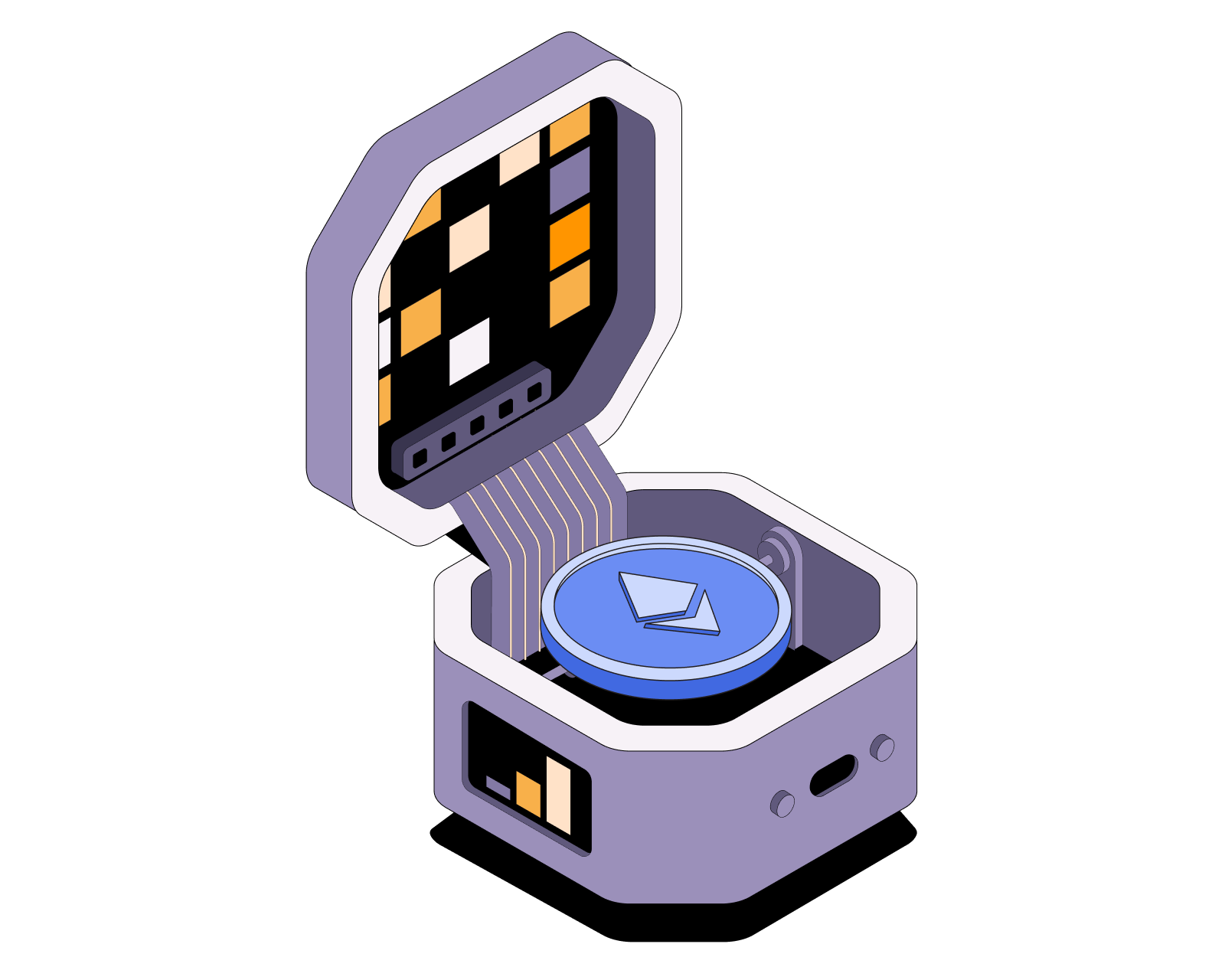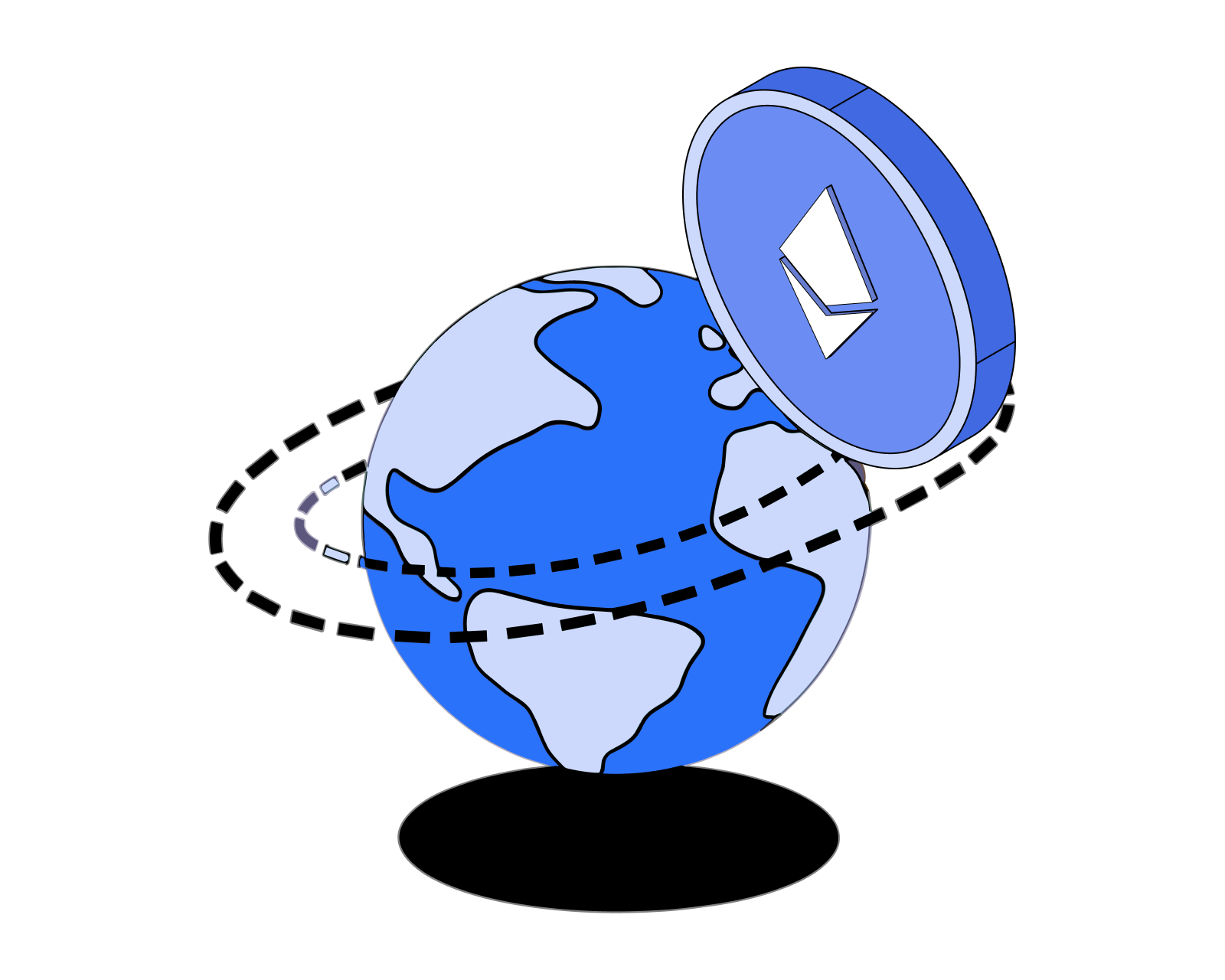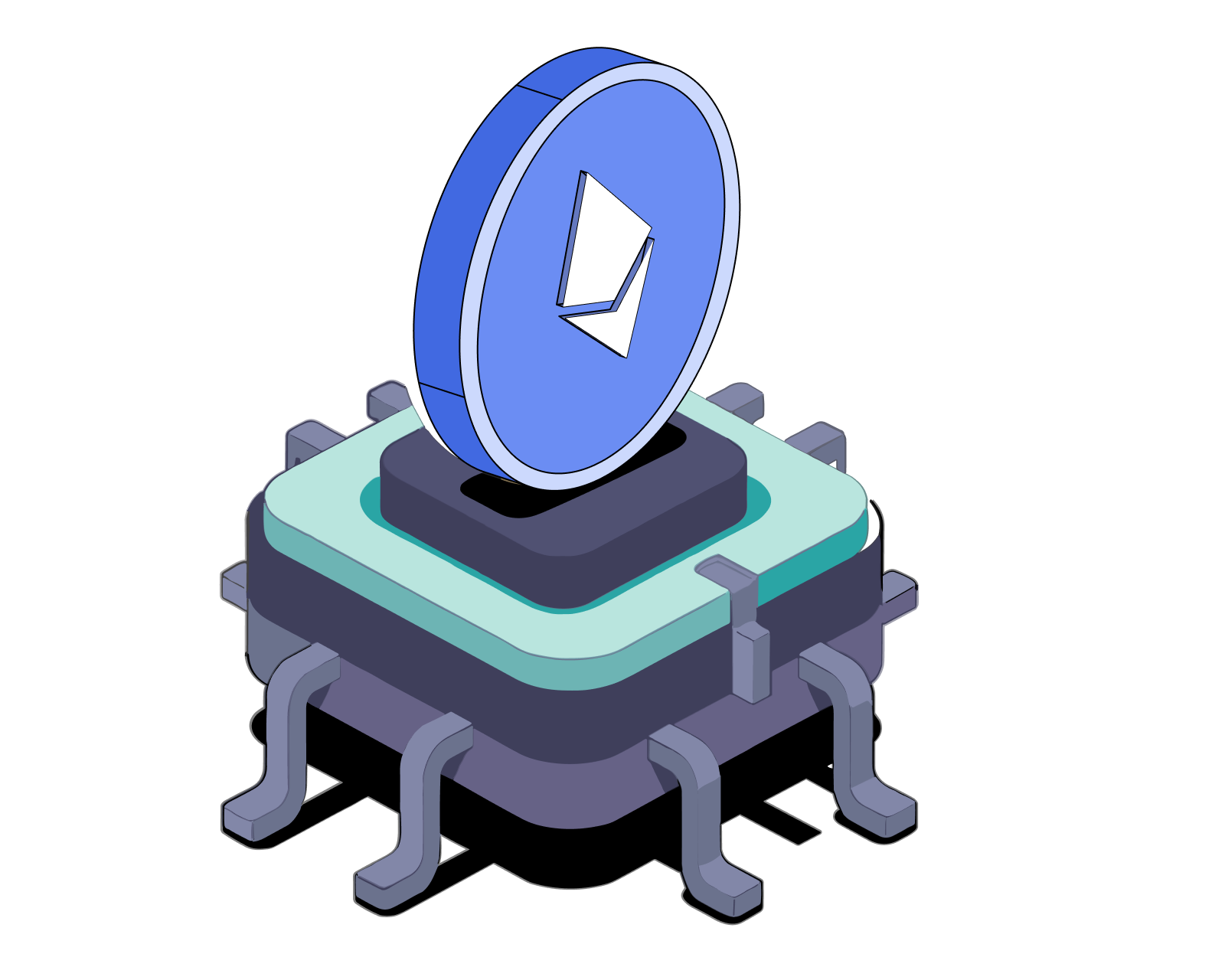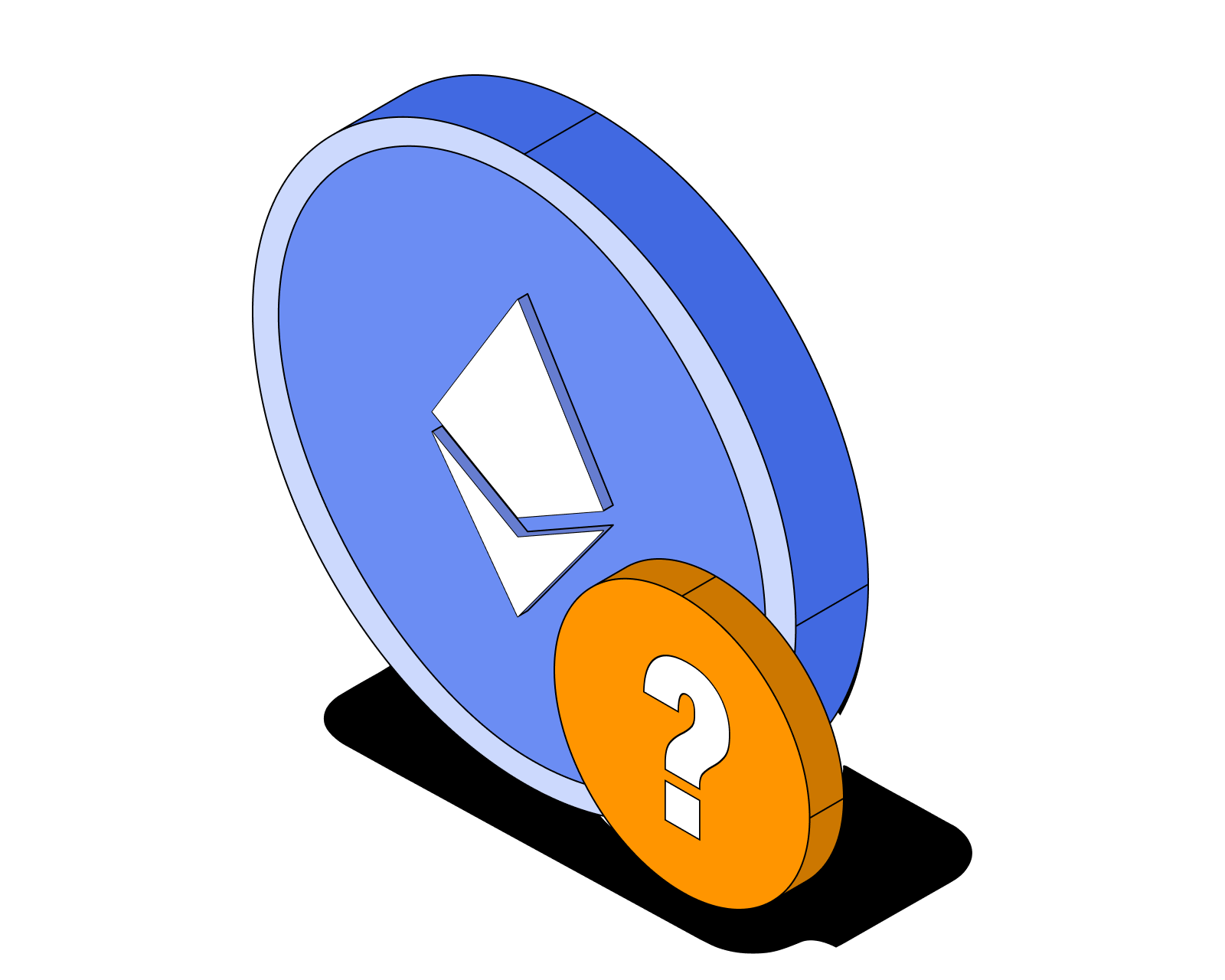What is Ethereum?

Table of Contents
Is Ethereum the world's computer?
Ethereum is often described as the world's computer. In some ways, this is an apt analogy, but it perhaps misses some of the important features that set Ethereum apart from "traditional" shared computers (see "Ethereum's key characteristics" below). It also fails to acknowledge the limitations of Ethereum in terms of its actual computing power. That's because, unlike a "traditional" shared supercomputer, Ethereum can't be used to, for example, process an image of the night sky and determine how many stars are in it. We should consider Ethereum, then, not as a shared workhorse, but rather as a shared platform.
Ethereum's key characteristics
Let's look at the key characteristics of Ethereum 'the platform' and briefly examine some of their implications:
- Open and 'permissionless' access
Anyone is free to create, run, and use applications on the Ethereum network. The network doesn't pick and choose which applications to run, and there's no need to create an account (ask for permission) in order to make, deploy, or use an application. Instead, the shared computer's resources are delegated purely by market forces. In other words, anyone willing to pay will have access to the network's processing power. This is a powerful democratizing feature. It means that, in theory, anyone in the world can use, for example, the finance protocols like lending and borrowing that are built on Ethereum. It also means that anyone can build an application on Ethereum, and have it be accessible to anyone else in the world without having to rely on approval from an intermediary.
- Transparency
Anyone can see exactly how both the operating system and the applications that run on it work. There are no hidden algorithms or propriety software, so participants can evaluate the minutest details of applications before deciding whether to interact with them. There is also full transparency into the history of each application. Anyone can see, for example, exactly how much collateral has been held in a lending protocol - from the protocol's inception right up to the present.
- Immutability
The state of the shared computer, once agreed upon by the network, becomes a permanent record that cannot be changed. ('State' in the context of computing refers to the information stored in the computer. A computer's state changes based on the interaction between external inputs and the internal logic of the system.)
The immutability of current and historical states, in combination with the above-described transparency, gives all participants a high degree of assurance that fraud is not being committed. So, rather than trust, for example, that an intermediary or its auditors are tracking information correctly, you can instead verify it for yourself.
- Durability
The network, and many of the applications running on it, are very difficult to shut down. This is thanks to the distributed and decentralized nature of the network. Distributed refers to the fact that the shared computer's components - it's processing power and memory - are spread out around the world. Decentralized means no single entity is in control. While Ethereum has public spokespeople, it is not owned by anyone in particular. This means that while governments for example, can ban Ethereum - and possibly even target well-known people associated with it - it's extremely difficult to prevent average people from using it, and even more difficult to shut it down completely.
- Neutrality
Finally, the protocol or 'operating system' evolves in a quasi-political process where a culture of consensus building dominates and where the stated goal is to achieve 'credible neutrality.' This means Ethereum may adapt to the needs of participants in a way that would appear markedly different from legacy proprietary computing models. Specifically, participants are endowed with a higher degree of assurance that they'll always have fair access to the network's resources and that the network will not evolve in a way that prioritizes the needs of one group over the needs of another.
Read more: How does governance work in Ethereum?
Ethereum and The Next Iteration of the Internet, Web 3.0
Instead of putting the taxi driver out of a job, blockchain puts Uber out of a job and lets the taxi drivers work with the customer directly.
-Vitalik Buterin, co-founder of Ethereum
If Ethereum is a platform, what is it a platform for? The answer is, optimistically, the next evolution of the Internet itself.
The current iteration of the Internet, known as Web 2.0, or Web2, is dominated by giant centralized platforms like Facebook, Google, Uber, and so on. The Web2 model has these centralized entities maintaining full control over your access to their products and services. In other words, Web2 is built on gatekeeping intermediaries. These intermediaries prevent you from gaining full visibility into the logic of their products and services (which are typically closed-source) and they often collect and leverage your personal information for profit. Further, in most cases, it's effectively impossible for you to influence the evolution of the products and services you use on a daily basis.
While end-users have certainly benefited from the products and services provided by Web2 platforms, there's an argument to be made that the intermediation and the lack of credible neutrality in the Web2 model both inhibits growth and results in dangerous concentrations of wealth and power.
In terms of inhibiting growth, consider for example that developers are hesitant to commit significant resources to building products on proprietary Web2 platforms when a seemingly arbitrary rule-change by a centralized entity can destroy their business model overnight.
As for concentrating wealth and power, consider that where a centralized entity has full control over, for instance, a widely used search algorithm, and where the inner workings of that algorithm are a closely guarded secret, there is significant potential for the centralized entity to not only optimize the algorithm towards extracting huge profits, but also towards influencing the flow of information itself.
By contrast, Web3 platforms are characterized by open access, decentralization, neutrality, and user ownership (see "Ethereum's key characteristics" above). By providing a space where everyone knows the rules, where the procedure for upgrading the platform is inclusive, and where participants stand to gain as the network grows, the theory is that growth can be supercharged while the benefits brought by internet technologies can be more widely distributed.
In the quote at the start of this article, Vitalik Buterin is pointing to the potential of Web3 to take the wealth and power now concentrated amongst a few giant ride sharing platforms (who act as rent-seeking intermediaries) and instead distribute it amongst the drivers and passengers themselves by empowering those two sides of the market to interact with each other directly (ie. without relying on an intermediary).
For another perhaps more ambitious example, consider what a Web3 social network might look like. Users could own their own data and be free to monetize it (or not). Advertisers could transact directly with end users, rewarding them for their attention instead of paying an intermediary to draw in a receptive audience. Users, who could be owners and stakeholders in the network, might have the option (and incentive) to take an active role in the evolution of the network by, for example, voting on upgrade proposals and deciding how to delegate funds. Other participants, confident that the platform can maintain credible neutrality over the long term, might feel safer dedicating resources by building products and services on the platform. The addition of utility and functionality enabled by these emboldened particuipants might draw in more users and, in turn, more developers in a positive feedback loop that could supercharge growth of the network. With incentives aligned correctly, such a network might grow rapidly while evolving dynamically and in the interests of its users.
Ethereum Today
The grand vision of Ethereum as a foundational platform for the next evolution of the Internet is slowly bearing fruit. The reality is that the Ethereum of today is still in its infancy, and as such, cannot yet manage, at the infrastructure level, the complexity of something like a decentralized social network.
This is not to say that Ethereum isn't currently being used. As of today, it is used for a variety of applications and services, including the following:
- Decentralized Finance (DeFi): DeFi aims to create an open and permissionless financial system. Users can borrow, lend, trade, and earn interest on their assets without relying on traditional banks. Learn about DeFi use cases.
- Non-fungible Tokens (NFTs): Ethereum enables the creation of NFTs, which are unique digital assets verified using blockchain technology. NFTs have gained popularity, particularly in the art world, as they can represent ownership of a unique piece of art, collectibles, or even real estate. Read more: What are NFTs?
- Gaming: Ethereum has given rise to a new era of blockchain-based games. These games often include tradable in-game assets like characters, skins, or weapons in the form of NFTs. Gaming is setting up to be one of crypto’s biggest use cases. Find out more: What is the metaverse?
- Decentralized Autonomous Organizations (DAOs): DAOs are like companies or organizations that operate without a central authority. The decisions and rules are made by members through a voting system and are enforced through smart contracts. DAOs can be used for a wide range of purposes, including governance, investment decisions, or collaborative projects. Learn more: What is a DAO?
- Identity and Reputation Systems: Ethereum can be used to create decentralized identity systems. This means users can own and control their identity information without relying on government agencies or companies. This can be used for anything from website logins to verifying that a product is genuine.
- Supply Chain Tracking: Companies are using Ethereum to track the production and shipment of products in a transparent way. For example, a consumer could scan a QR code on a product and see the entire history of that product, from manufacturing to the shelf.
Read more: What is ETH used for?
Related guides
Start from here →

What is ETH used for?
Understand the function and utility of ETH.

How to buy ETH
Learn how to buy ETH and hold it securely in a digital wallet you control.
Read this article →
How to buy ETH
Learn how to buy ETH and hold it securely in a digital wallet you control.

Who created Ethereum?
Understand the origin and early history of the Ethereum protocol.
Read this article →
Who created Ethereum?
Understand the origin and early history of the Ethereum protocol.
STAY AHEAD IN CRYPTO
Stay ahead in crypto with our weekly newsletter delivering the insights that matter most
Weekly crypto news, curated for you
Actionable insights and educational tips
Updates on products fueling economic freedom
No spam. Unsubscribe anytime.



Start investing safely with the Bitcoin.com Wallet
Over wallets created so far
Everything you need to buy, sell, trade, and invest your Bitcoin and cryptocurrency securely

© 2025 Saint Bitts LLC Bitcoin.com. All rights reserved


